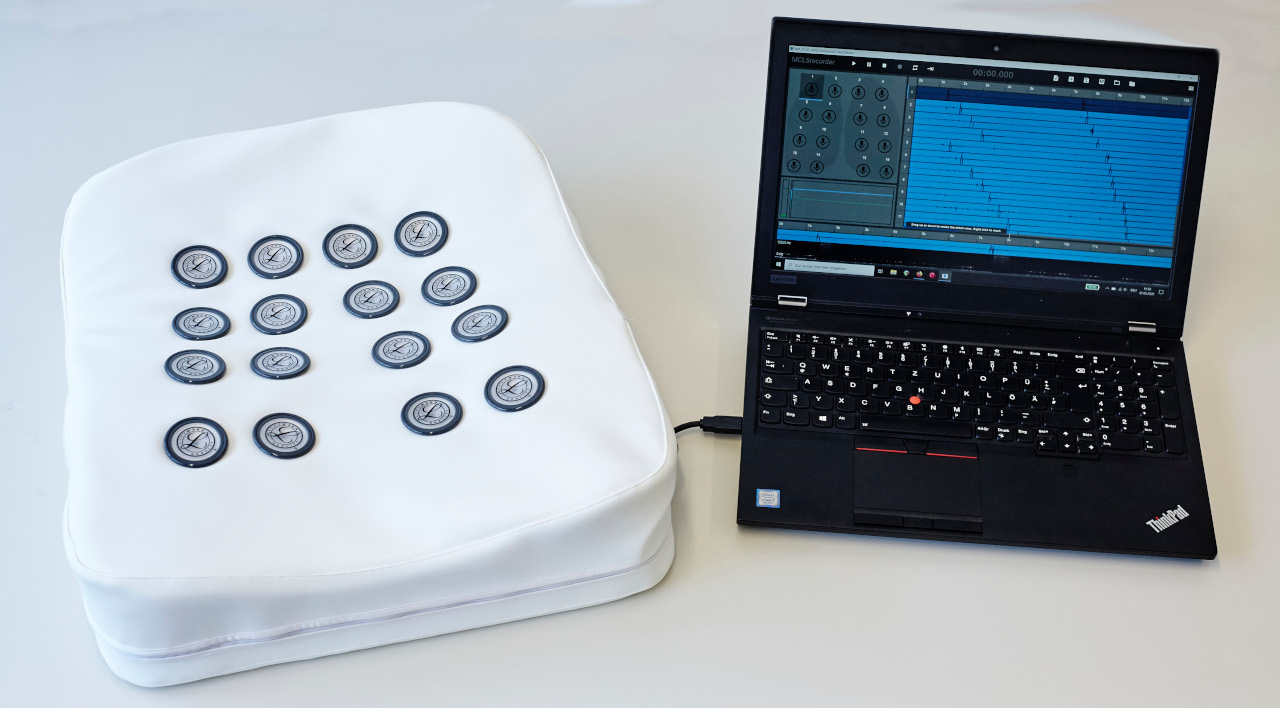Computational Lung Sound Analysis using Deep Learning
- Published
- Mon, Jun 01, 2020
- Tags
- rotm
- Contact

Computational methods for the analysis of lung sounds are beneficial for computer-supported diagnosis, digital storage and monitoring in critical care. Pathological changes of the lung are tightly connected to characteristic sounds enabling a fast and inexpensive diagnosis. Traditional auscultation with a stethoscope has several disadvantages: subjectiveness, i.e. the lung sounds are evaluated depending on the experience of the physician, cannot provide continuous monitoring and a trained expert is required. Furthermore, the characteristics of the sounds are in the low frequency range, where the human hearing has limited sensitivity and is susceptible to noise artifacts.
To facilitate a more objective assessment of the lung sounds for diagnosis of pulmonary diseases/conditions we developed a multi-channel recording device (see Figure). Furthermore, in a clinical trial we classified adventitious and normal lung sounds using deep neural networks [1].
Our device enables a reliable easy-to-use lung sound recording for (1) better assistance to patients and avoidance of diagnostic odysseys and (2) non-invasive early detection of lung diseases reducing the unwanted exposure of patients to X-rays and allowing for early treatment. The joint treatment of deep learning harmonized with the multi-channel lung sound recording hardware provides a significant improvement for computational lung sound analysis.
Contact: Franz Pernkopf, Vincent Ederle
[1] E. Messner, M. Fediuk, P. Swatek, S. Scheidl, F.-M. Smolle-Jüttner, H. Olschewski, F. Pernkopf, “Multi-channel Lung Sound Classification with Convolutional Recurrent Neural Networks”, Computers in Biology and Medicine, accepted,2020.
Browse the Results of the Month archive.
